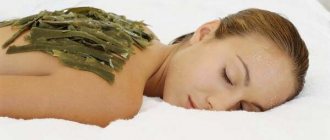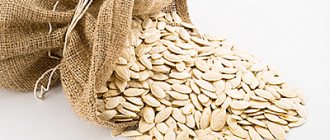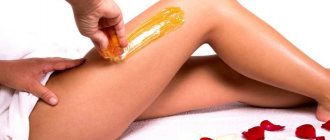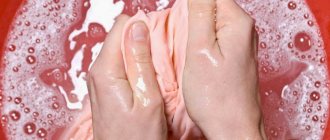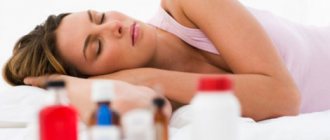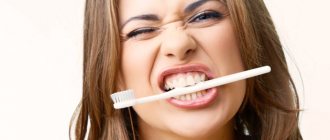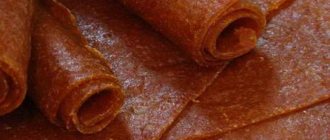Sugaring today is one of the most attractive methods of getting rid of unwanted hair. Firstly, it still seems new and fresh to many. Secondly, it is quite easy to carry. Thirdly, you don’t have to buy sugar paste for sugaring, because there is nothing easier than cooking it yourself at home. Very comfortably. Need waxing? 15-20 minutes and the product is ready. Effective, exciting, economical and you don’t have to go anywhere, because everything is at your fingertips. For those who made sugar candies in childhood, it will be quite simple. Sugaring paste is prepared in a similar way, with minor exceptions.
Some general information
For those new to sugaring, the question of what sugar paste should be requires clarification. Good means elastic. The quality of sugaring paste is assessed by the duration of its performance, that is, the time before it becomes clogged with hair and talcum powder. Another important point is tenacity. The shorter the hair the paste captures, the better. It is generally accepted that if a paste removes hair of 5 mm or more well, it can be called high-quality. Sugar pastes have different densities. At home, you can adjust the cooking time. Thick pastes are intended for removing thick shaved hair, soft pastes for thin fur.
Features of preparing the mixture
High-quality hair removal implies an understanding of how the sugaring mass should look correctly, what its composition should be, and what needs to be done in one or another unforeseen situation related to the depilation procedure.
The consistency of the product itself is very similar to sugar caramel, to which water or citric acid is added, depending on what kind of mixture you want to create. In addition to the basic components, it may also contain other substances that can increase the effectiveness of using the product and have a soothing or anti-allergic effect on the skin.
The variety of types of sugaring paste (its recipes and methods of application) allows you to experiment in order to choose the most suitable option.
To understand which sugaring recipe to choose at home, you will have to cook the paste in several density options (not many people get the mass of the desired consistency the first time). The paste should not be too liquid or viscous (the darker it is, the denser it is, and vice versa). This condition is influenced by the proportional combination of the necessary ingredients.
Experts distinguish three types of viscosity:
- Soft and viscous, very similar in texture to honey. The best option for manually removing excess body hair by hand.
- Medium density. It is best suited for hair removal on arms and legs; removal is carried out quite carefully; the substance is effective when used against coarse hair.
- The dense consistency is used for especially delicate areas of the body (mainly the armpits and bikini area), where the hair is rough and harsh.
For each girl or woman, the choice of density is individual. However, in most cases, the second option is used, since it is more practical and easy to use. Another feature is that medium density is used on almost all parts of the body.

Classic recipe for sugar paste for sugaring at home
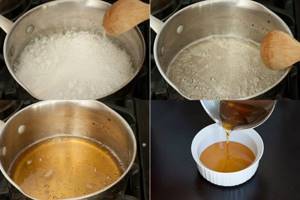
There are quite a few recipes for making sugar pastes at home, but they all involve approximately the same set of steps. Small differences are only in one or two ingredients.
For the classic version of the paste, you need to take 200 g of sugar, add 100 ml of water and the juice of half a lemon, immerse it all in an enamel pan with a thick bottom and put it on low heat. The mass must be stirred constantly. Within a few minutes, its color will begin to darken - this is a sign that the paste is ready soon. At the same time, you can start making density tests. Drop a little paste into a saucer of cold water and try to knead the lump.
Attention! Don't try to cook the pasta until it's fully cooked. It needs to be done al dente (almost ready) because the mixture will continue to thicken after removing from the heat. Lemon in sugaring paste serves as a glue for sugar molecules. It is this that makes the paste plastic; without lemon it will turn into an ordinary candy. Let the paste cool slightly and begin removing hair.
Try to use all the prepared mixture at once. If this does not happen, there will be no problem, but when heating the pasta in the microwave, you need to add a little water, and this will change its original consistency. There is no need to worry about the cleanliness of the dishes. The paste perfectly lags behind its walls on its own; you just need to fill the container with water and wait a little. As for storage, plastic containers are more suitable. Whether it sits in the refrigerator or at room temperature doesn’t matter. The only important condition is maintaining tightness. The paste should be protected with a tightly closed lid from exposure to moisture and reaction with oxygen.
How to properly store the composition
Freshly cooked pasta can be immediately stored. An airtight container (for example, a glass jar with a lid or a plastic container) is suitable for this. The paste is poured into a bowl and covered with a lid. After this, it remains suitable for use for about one month. The prepared pasta can be stored in the refrigerator for up to 2 months .
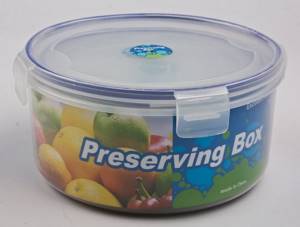
Homemade sugaring paste should be stored in a plastic or glass container with a lid, for example, a regular food container.
It is worth saying that theoretically the paste can be used several times. It does not lose its properties and retains its elasticity if it is sent in the refrigerator and reheated up to 4 times. But you probably don't want to use a paste that already contains hairs and skin flakes. For reasons of hygiene, it is best not to apply a previously used mixture to the skin.
Preparing sugaring paste with vinegar
Everything is the same, but instead of lemon juice there is vinegar. You can take any, table or apple. This is a more preferable recipe for summer, because lemon brightens the skin, and open exposure to sunlight can lead to pigmentation. This paste is perfect for people with excessive/impaired sebum regulation, since vinegar also has a drying effect. It is worth paying special attention when cooking and not focusing too much on the color of the pasta. In this case, it does not indicate readiness, because vinegar causes the mixture to darken faster.
Nuances of preparation
In order for the hair removal procedure to be effective and as painless as possible, the sugar paste must be of the correct consistency. But what to do if the mixture does not turn out as desired? Sometimes you can correct mistakes and make the paste usable.
If the composition is too dark
The dark color of the mixture means that the sugar has begun to caramelize, which means it is destroyed. But we need to make paste, not candy. Lemon juice is designed to prevent caramelization. Like any acid, lemon juice separates sugar into two components: fructose and glucose. This prevents crystals from forming again.
Basically, when making sugar paste, you need to evaporate almost all the water to get a 92% sugar solution (for a thick consistency).
The paste should not boil - the composition is brought to a boil and kept in this state over low heat, but do not boil! Then the color will be light, not caramel. At the same time, the cooking process should not be very long - this also leads to caramelization. The faster you manage to evaporate the water (without boiling!), the lighter the shade you will get.
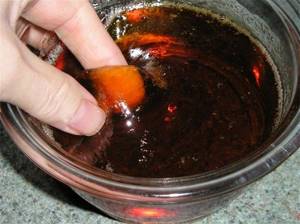
The lighter the color of the paste, the more flexible and elastic it turns out.
How to make paste thicker
If you need a dense paste that you plan to use for sugaring using the “ball” method, then you can slightly adjust the traditional recipe and take not a quarter cup of water, but one eighth (see the classic recipe).
One of the secrets to thick pasta is guar gum, a safe food thickener commonly used for gluten-free baking. But you can add the concentrate only at the end of the process, since guar gum, like any thickener, prevents water from boiling away. For the classic recipe, you will need 1 teaspoon of powder (add at the final stage).
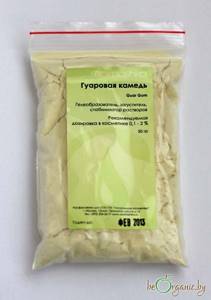
For the desired consistency, you can use a food thickener - guar gum or guar gum
How to make paste thinner
If the mixture is too dense, the following techniques will help:
- Use xanth gum, a food filler that makes the sugar paste more elastic. Available in powder form, it is added to sugaring paste when a more liquid option is required;
- when selecting ingredients, add a little less sugar than indicated in the recipe - the composition will turn out to be pliable like liquid honey;
- The easiest way is to warm the paste for 3-5 seconds in the microwave to soften the very thick mixture.
Recipe for sugar paste with honey
Again the same procedure. This time we take liquid honey, lemon juice and, of course, sugar. Mass proportions: honey – 25%, lemon juice – 25%, sugar – 50%. The rest is unchanged, the pasta is cooked over low heat until almost completely cooked, all this time it is stirred with a spoon.
Honey gives the paste additional delicacy when used. It perfectly heals, rejuvenates and nourishes the skin, increases the elasticity of its turgor, and even evens out the tone. In general, sugaring with a paste with the addition of honey is noticeably easier and more pleasant. The main thing is that you are not allergic to honey.
How to choose store-bought hair removal paste
You don’t have to waste time preparing the paste yourself, because the composition can be bought. A large selection is offered by brands of organic and hand-made cosmetics.
Important: before using store-bought paste, do an allergy test. Try the mixture on a small area of skin (arms or legs). Mild redness is a common reaction that goes away within one hour after the procedure. You should be wary of pastes that cause severe redness and various skin rashes.
Ready-made pastes are packaged in plastic jars of various sizes. Professional masters who do sugaring every day buy containers of 1000 or 1200 g. For home use, such a large quantity is not required; a package of 200–300 g is enough.
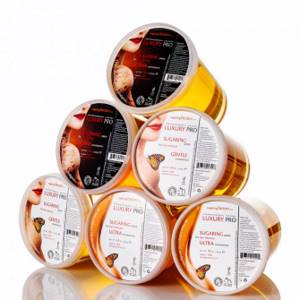
Ready-made pastes of varying degrees of density are available for sale.
Pastes are distinguished by degree of density:
- liquid (soft, gentle);
- average (medium, ultima);
- thick (hard, ultra).
When purchasing in a store, you will be offered other necessary things for home sugaring, which will greatly facilitate your first experience with sugar hair removal:
- gloves;
- spatulas;
- bandage tapes;
- soothing lotions;
- talc.
Recipe for sugaring paste with medicinal herbs
Sugaring brings a lot of good things to the skin; it not only rids it of unwanted hair, but also has a light peeling effect. Why not increase the utility factor? This is easy to do, just use the treated decoction instead of water. Chamomile, calendula, oak bark, St. John's wort, nettle, ginseng, etc. - take any of these plants (or a collection of them), pour boiling water over them and let it brew for 15-20 minutes, then add pasta instead of water when cooking. You should not be overzealous with the strength of the decoction; it is better that its concentration is weak.
Cooking tips
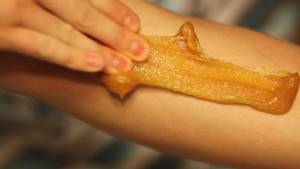
Few people can immediately cook the mass for sugaring at home in the correct concentration. But this is not a reason to give up - everything is possible with experience. Frequent mistakes are overcooking or burning of the mass due to lack of liquid. Many girls complain that in just a couple of extra seconds on the fire, the usable mass turns into candy. Strict adherence to the recipe and small tricks will help you avoid caramelization:
- You should always strictly follow the recipe and observe the quantities of ingredients indicated in it.
- If there is not enough lemon juice, reduce the proportion of other ingredients proportionately. If you ignore this recommendation, you will not be able to cook sugaring paste at home.
- It is better to use sugar with large crystals. You can discard powdered sugar immediately. It will not reach the desired consistency when cooked. Fine sugar is also not good - it cooks poorly.
- After squeezing the juice (not factory-pressed), it should be strained. This must be done to avoid unnecessary inclusions from the pulp getting into the prepared mass.
- To prepare the caramel composition without any problems, you should give preference to aluminum saucepans. The use of enamel and Teflon types of cookware is excluded. For example, ordinary saucepans or ladles with a significantly thick bottom are ideal for obtaining the desired result.
- As soon as the cooking process reaches the consistency required for sugaring, you should immediately pour the entire resulting mass into a plastic cup or jar. A glass container will also work. This recommendation must be followed promptly, otherwise the caramel will thicken as it cools. In this case, it will not be easy to remove it from the container.
There are basic recipes for DIY sugaring paste.
A popular option is lemon juice. This variation of the recipe is simple, the components are available, and is considered the easiest to make. You should prepare:
- 300 g sugar;
- Squeeze the juice from half a lemon;
- 30 ml water.
Cooking steps:
- First, put everything in a pan.
- Mix the ingredients.
- Heat over low heat.
- Close with a lid.
- Caramel should not be opened before boiling.
- Once it boils, you won't need a lid.
- The sugar solution is stirred until it acquires an ocher color.
The readiness of the mass is easy to determine. To do this, just drop a little caramel into the water. If you crush it, and provided that it becomes similar in density to plasticine, everything is ready. With this consistency, the pan can be safely removed from the stove. If the sugaring paste turns out to be liquid, you should keep it on the stove a little longer.
The finished paste with a plastic consistency is used in conjunction with bandage strips. And the viscous variation, which resembles plasticine, is stretched with your fingers.
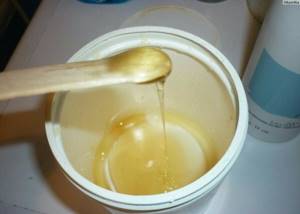
The second popular cooking method is based on citric acid. When there is no lemon, you can always replace it (without losing it as a future mass) with citric acid. The composition prepared in this way is soft and elastic. The secret of success is in precise adherence to proportions. This recipe requires the following:
- sugar - 300 gr;
- water - 80 ml;
- acids - 10 g.
The recipe is simple:
- All elements are mixed in a container (preferably with a thick bottom).
- The mixed components are heated by selecting the minimum temperature (one minute). They are filming.
- Allow the mixture to cool.
- Then heat for another 4 minutes, stirring continuously.
When the mass acquires a beautiful ocher color, it is removed from the stove. But you shouldn’t go by color alone.
It’s quite easy to make a sugaring paste at home, using a microwave to heat it evenly. Required ingredients for cooking pasta:
- 200 g sugar;
- 50 grams of honey;
- 50 ml lemon juice.
It is worth paying attention to one nuance. With this method of cooking, the pasta is cooked instantly; it is important to be careful not to burn the finished composition. You need to set the maximum power, and the time of one cycle should be no more than 15 seconds. When the oven completes the heating cycle, the mixture needs to:
- pull out;
- to stir thoroughly;
- check readiness.
At the last point, take out the container and drop a drop into the water. If necessary, cooking will need to be repeated. Boil a little more until a yellow tint appears and the viscosity of caramel appears.
Recipe for sugar paste with essential oils
Essential oils are not added to professional pastes, as they increase the risk of developing allergies in clients. But if you make pasta for yourself, then why not? With your favorite essential oil, the procedure will seem more pleasant and will be a successful combination of sugaring and aromatherapy. It doesn't matter at all which oil you choose. Add just a few drops of it to the paste, maintaining the classic proportions of the recipe. The oil will slightly change the consistency of the mass, which is why you will have to knead it a little more before work, but this is such a trifle.
Why choose hair removal using sugar paste?
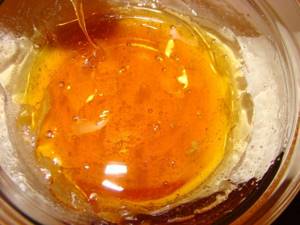
Sugaring or caramel depilation is perhaps one of the simplest available ways to remove hair for a long time, not with a cosmetologist during a salon procedure, but at home. This is also an additional peeling of the upper layers of the dermis during removal, a vitamin mask, a long-term effect that is available at home.
There are practically no contraindications for hair removal with sugar. The exception will be serious mechanical and thermal damage to the epidermis and local bacterial ones. The procedure is distinguished by an affordable price and does not require special skills to perform. Another undeniable advantage is that it is easy to cook sugaring paste at home. Of course, there are professional formulations available, or you can always go to a salon specialist. However, homemade sugaring paste is not inferior to professional options.
Advantages of sugaring:
- Affordable price. Removal performed by a professional has a high cost. The ingredients for sugaring paste are not exclusive. They are available in, perhaps, every kitchen.
- Versatility. This form of hair removal is suitable for all parts of the body. It can also be used for areas with high sensitivity.
- Economical mass consumption. One prepared portion is enough to remove hair from several areas.
- Sugar paste contains only three natural ingredients. It will not provoke allergies (irritation after the procedure is not an allergy). An exception would be citrus intolerance.
- Gradual decrease in hair growth. During the procedure, the hair is removed along with the follicle, which leads to thinning of the hair shaft. No, the hair will not disappear completely, but over time the breaks between sessions will become longer and longer.
- Caramel removal is almost painless. Due to the fact that hairs are pulled out according to growth, and before the procedure the skin is steamed and scrubbed. Mechanical instant hair pulling causes virtually no pain.
- Improving the condition of the skin. The procedure involves gentle peeling of the upper layers of the dermis. After the session there are no ingrown hairs left.
- No need to grow hair. The minimum height allowed for work is 3 mm.
- Unlike a wax procedure or photoepilation, it is very difficult to get a thermal burn during a caramel procedure. Sugar for sugaring at home is heated only to 37 °C.
- Sugaring is a hygienic procedure because the integrity of the skin is not compromised. Also, due to the high concentration of sucrose, bacteria cannot reproduce and survive. This reduces the likelihood of bacterial infections.
- The procedure can also be performed with varicose veins (grade 1-2, this is not an obstacle to the procedure). Sessions are also possible during pregnancy (if the procedure has already been performed before).
The procedure has a minimal number of contraindications. Mechanical hair removal is not recommended immediately after:
- chemical peels;
- solarium;
- sunburn;
- laser skin resurfacing.
Any mechanical impacts are allowed only after a year.
How to make pasta in the microwave
You can cook pasta in the microwave, but it will not be possible to determine the optimal time and operating mode of the oven right away. This is a trial and error method, convenient and inconvenient at the same time.
The entire procedure described above is identical: sugar, water and an ingredient to taste (lemon juice, vinegar, honey). Everything is placed in a heat-resistant container and then microwaved. The paste must be constantly taken out and stirred. How often to take it out and how long to heat it depends on the power of the particular microwave oven. This is the main problem, which everyone will have to solve individually.
Technique for sugaring on the face
If you use a soft paste, you will have to remove hair using bandages. The preheated composition is applied to the skin with a spatula against hair growth and distributed evenly.
By the way, some industrial pastes do not require additional heating, so read the labels and reviews of the pastes.
If you heat the composition, then monitor the temperature - it is easy to burn the skin on your face. Keep in mind that the soft mass lies on the skin gently, without stretching, but does not spread. If the mixture flows, you may have undercooked it or overheated it. Let it cool. Well, or the room is too hot or humid. Open the window - it is possible that this will help.
Place a bandage strip over the paste
To whom and when is sugaring contraindicated?
Correctly performed sugar depilation does not violate the integrity of the skin, despite this it has a number of contraindications. Shuagring is not recommended for varicose veins, various dermatitis and viral diseases, cuts, abrasions or other skin injuries. Doctors do not recommend depilation during the 1st trimester of pregnancy, but in the 2nd and 3rd trimester you can do so with caution.
The correctly chosen period of its implementation will help to minimize the pain of the procedure. Thus, it is better not to do sugaring before menstruation or ovulation - at this time the pain threshold for most women is highest.
Sugaring of the face, features
An undeniable advantage of hair on a woman’s face is that the hairs are usually very thin and fluffy. Often they are noticeable only to the lady herself, but despite this they cause her a lot of inconvenience. Such hairs are easy to remove. It’s more difficult for brunettes - their hair is initially thicker from birth. But sugaring can handle such hairs too. True, there are times when hair suddenly becomes thicker, coarser, and begins to grow rapidly. This is most often associated with hormonal imbalance and, first of all, you need to consult an endocrinologist. But even in this case, facial sugaring for women is not contraindicated. It is advisable to do it in parallel with the course of treatment.
Most often, women undergo sugaring of the upper lip and eyebrow sugaring.
Photo: Sugaring of the face for women
The epidermis in these areas is very delicate and sensitive, so the face behaves differently after sugaring. In addition to hair removal, the sugar mass also provides a light peeling effect - it removes the top layer of skin, or rather dead epidermal cells. Peeling is never superfluous for the face, but it is important not to overdo it.
Advantages of facial sugaring:
- Efficiency;
- Safety;
- Skin care;
- Simplicity and speed.
